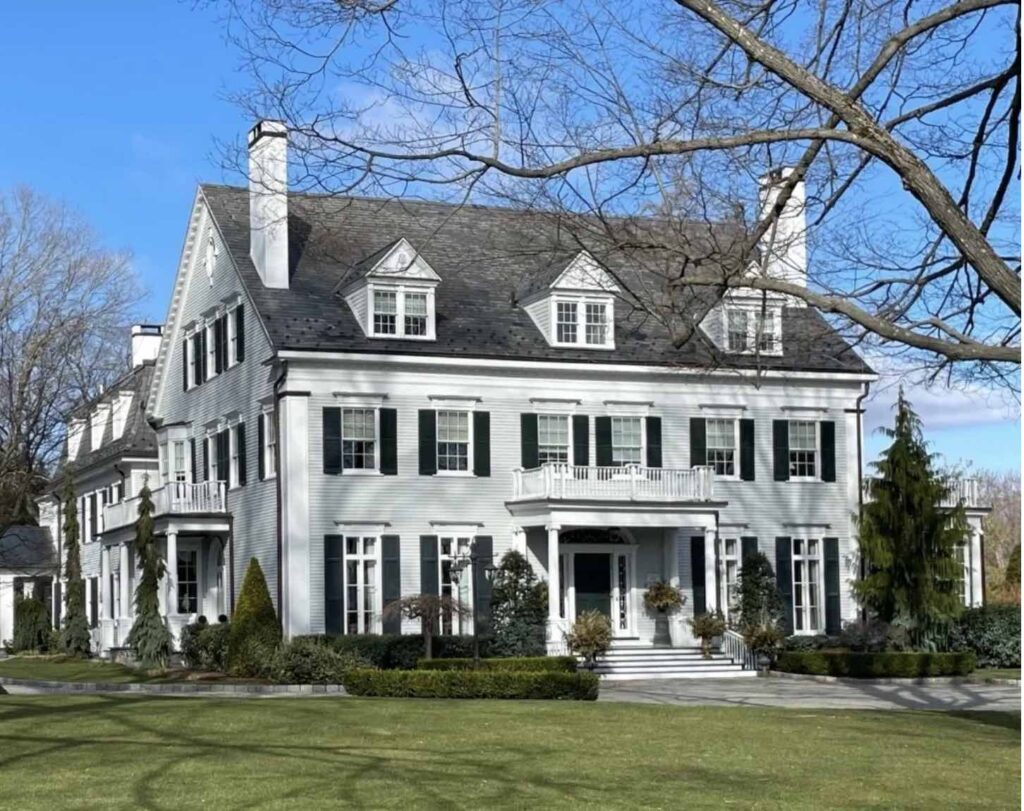The Joshua King House

Joshua King first encountered Ridgefield as a Lieutenant during the Revolutionary War and later became one of its most prominent citizens.
A native of Braintree, Mass., Lt. King was serving with the Second Regiment of the Light Dragoons near South Salem, N.Y., when the British spy Major John Andre was captured. The story of King’s brief acquaintance with Benedict Arnold’s spy-mate is told in an 1817 letter written by King to a friend, and reprinted in Teller’s, Rockwell’s, and Bedini’s histories of Ridgefield. The King family history, written by Henry P. Phelps, says that Lt. King “remained at headquarters till the execution and even walked with him to the gallows on which the brave and gallant Englishman met his shameful death.”
In Ridgefield, General King (as he was later known for service in the Connecticut militia) was the town’s first postmaster and was a town official, state representative and delegate to the important Connecticut Constitutional Convention of 1818. He and a fellow veteran, James Dole of Albany, N.Y., had established a store on Main Street, just after the war ended. (It’s now part of the Aldrich Museum administration building.) General King then acquired land on the opposite side of Main Street and in 1801 built his large home, which remained in the King family into the 20th Century. The most centrally located of Ridgefield’s old estates, it is also one of its oldest and most historic.
As a merchant he was evidently quite successful, for General King became a wealthy man. (Dole dropped out of the business soon after it started.) King bought much land all over Ridgefield – he became perhaps the largest private property owner in town in his time; certainly he held more than any other non-farmer. He also owned interests in several mills in town. In addition, he was a sort of one-man bank, providing mortgages to many residents.
Joshua and Anne Ingersoll King had 10 children – four sons and six daughters. Samuel G. Goodrich (“Peter Parley”) described them in his Recollections of A Lifetime: “All reached maturity and constituted one of the comeliest groups I have ever known.”
Lt. King died in 1839, a year after Anne. On the death of his father, the youngest King son, Joshua Ingersoll King (1801-1887), returned to the family homestead in Ridgefield. In an 1855 visit to his native town, Samuel G. Goodrich met Joshua I. King and described him as “not only the successor but in some things the repetition of his father. He represents him in person, and has many of his qualities. He has remodeled the grounds around the old family mansion, amplifying and embellishing them with much judgment.
“The house itself is unchanged, except by paint and the introduction of certain articles of furniture and tasteful decorations – testimonials of the proprietor’s repeated visits to Europe. Here, being a bachelor, he has gathered some of his nieces, and here he receives the members of the King dynasty down to the third generation – all seeming to regard it as the Jerusalem of the family. The summer gathering here is delightful, bringing hither the refinements of the best society of New York, Philadelphia and other places.”
In the late 1800’s, several buildings – at least two of them houses – stood on the King property. Joshua I. King occupied the main house while his nephew J. Howard King, a wealthy Albany N.Y. businessman, had an ornate Victorian place nearer the corner, calling it “Peaceable Cottage” and using it chiefly as a summer retreat. It was J. Howard King who began marketing large lots on High Ridge as premier sites for country “cottages.”
Joshua I. King was 85 when he died in 1887. In July 1889, the old family homestead was destroyed by fire, together with many heirlooms and family portraits. One of the finest houses in 19th Century Ridgefield, it was being renovated at the time of its burning.
Howard King had a new version of the homestead built by Charles S. Nash, using almost the same design as its predecessor, but set farther back from what was becoming a busier Main Street. Construction on it began in 1894 and it became J. Howard King’s house. His Victorian next door was either torn down or, had burned down.
After J. Howard King’s death in 1900, the Main Street estate continued to be used by his widow, Henrietta, until her death in 1919. The house and its 11 acres plus 35 acres at Silver Spring were sold to Richard A. Jackson of Stevenson, Md., in 1922.
A railroad executive and attorney, Jackson named his new country home “Anascote” (a kind of Spanish fabric). At some point in the 1920s, when the old Bailey Inn just to the north of the King estate was about to be torn down, Jackson had the rear wing of the hotel moved to the back of his house, considerably increasing its size.
He also replaced the old wrought-iron fence with the stone wall still surrounding the property. It prompted locals to call him “Stonewall Jackson.” Francis D. Martin maintained that the upward-pointed stones along the King Lane segment of the wall were installed to prevent young Jackson family servants and kitchen help from sitting on the wall, socializing with young male locals.
Richard Jackson died in 1934 and a son, Fielding V. Jackson, moved with his family to Anascote. Fielding Jackson was long active in St. Stephen’s Church. He died in 1962. His widow, Julia Tower Jackson, continued to live in the house until 1978.
Today, the mansion, restored in 2002-2004, is owned by the town’s top official of historic preservation.
Audio Story narrated by Rob Coloney.



